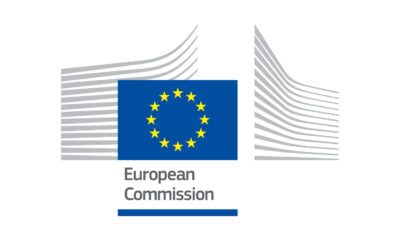Travel
Beyond the baccarat tables: Macao’s rich Portuguese history is still visible today
Churches and cuisine stretching back centuries still reflect Portugal’s legacy as Macao integrates into China.
Lilau Square looks warm and languid in the fading daylight.
Like any Portuguese plaza, time moves slowly here. Locals chat over coffee beside a kiosk. Travellers take photos beside whitewashed buildings. A couple pauses to admire the ‘calçada’, the smooth, swirling tiles found anywhere the Portuguese left a footprint.
If it weren’t for the 200-year-old banyan tree and melodic rise and fall of Cantonese in the air, you might mistake this corner of Macao for a quiet Lisbon neighbourhood.
I glance at a fountain spurting water into a shallow pool and think of an old saying about this place: anyone who drinks its water will someday return to Macao.
I’m not sure I’ve knowingly had the water from the fountain, but this is my sixth trip to the city, each a little longer than the last. Every time, I find myself drawn back into the extraordinary cultural tapestry, uncovering something new about Macao’s Portuguese past and falling for it all over again.
There may be something to that legend after all.
Macao is more than just a gaming capital
Mention Macao, and most people think of casinos. Fair or not, the city has earned its reputation as a gambling powerhouse.
In 2024, it raked in nearly €25 billion in gambling revenue – almost entirely from baccarat, the card game of choice for mainland Chinese bettors.
But long before it became Asia’s casino capital, Macao was a vital outpost in Portugal’s global empire.
Lured by its strategic location in the Pearl River Delta, the Portuguese arrived in the 16th century and the colony soon became a key trading hub.
Macao’s fortunes ebbed and flowed over the centuries. By the 1990s, it had become a city of vice dominated by Dr. Stanley Ho – ‘the godfather of gambling’ – and his casino monopoly.
After more than 400 years of colonial rule, Portugal handed Macao over to China in 1999. Beijing wasted no time reshaping the city. They even reclaimed land to merge two islands – Taipa and Coloane – creating the Cotai Strip, now home to extravagant casino-resorts.
The once-impoverished enclave rapidly transformed into one of the world’s wealthiest.
Echoes of Portugal resonate in old Macao
On a perfect January morning, a soft sun shining in a bright blue sky, I meet Mariana César de Sá for a walking tour of Macao’s UNESCO-listed historic centre.
Born and raised in Macao, César de Sá publishes ‘Macao News’, the city’s leading English-language news and lifestyle source. She takes pride in showing visitors the city beyond its cavernous casino-resorts.
We meet behind Macao’s most famous landmark, the Ruins of St. Paul’s. Only the stone facade remains of this 17th-century Catholic church, destroyed by a fire centuries earlier.
Before braving the tourist throngs gathered in front of the cathedral frame, which lords over old Macao like a gateway to the past, we slip into a neighbourhood beyond the former city walls – the Pátio do Espinho. Once a settlement for the exiled Japanese Christians who built the church, today it’s a sleepy enclave of single-storey homes.
“I like to take visitors here first. It’s full of history but also a taste of real life,” de Sá tells me.
It’s also a reminder of how far the Portuguese ventured during the Age of Discovery – how their customs, architecture and religion took root in the most distant corners of the world.
Walk through history to see the best of Macao
From the ruins, we wander through the Travessa da Paixão, ‘passion street’ – a cobblestoned alley lined with pastel-hued colonial buildings that has become a magnet for wedding photos – and walk slowly through narrow alleys to Senado Square.
When we reach the square, the city’s calçada-paved civic heart since the 16th century, de Sá gestures toward a hulking white building: the Municipal Affairs Bureau.
“It was the original city hall from the 18th century – and it’s still that today – but most people don’t realise you can go into it,” she says, stepping inside a peaceful Portuguese courtyard lined with azulejos (blue and white ceramic tiles) depicting scenes from Macao’s history.
The whole historic centre is full of secret spaces and centuries-old buildings that continue to function today. The canary-yellow St. Lawrence Church built by Jesuits still holds services. The coral-coloured Macau Military Club, once only for military men, now welcomes guests into its excellent Portuguese restaurant.
Some, like the 19th-century Dom Pedro V Theatre, hold special meaning beyond history.
“It instantly transports me to Portugal,” says Sara Santos Silva, an expat from Porto who has lived in Macao for 10 years.
“During my early days in Macao, when I was blown away by the sensory overload of living in Asia, it felt nice to find myself in familiar surroundings: impeccable cobblestone, a kiosk just like the ones you’ll find in Lisbon, and the pale green facade of the theatre.”
Even the 15th-century A-Ma Temple, a shrine dedicated to the Chinese sea goddess Mazu, holds unexpected significance today. When Portuguese settlers arrived centuries ago, they misinterpreted the temple’s name – ‘A-ma-gok’ – as the name of the land itself.
Macao’s Portuguese history is a legacy best tasted
Maybe nothing speaks to this unique heritage like Macao’s food.
From tranquil Coloane and residential Taipa to the historic centre, decades-old restaurants serve Portuguese classics like ‘bacalhau à brás’ (salted cod mixed with onions, chopped fried potatoes and egg), grilled sardines, and baked duck rice.
“There’s no shortage of options. I know where to turn to for a better-than-decent ‘francesinha’ (Porto’s hefty sandwich), a proper ‘prego’ (steak sandwich) and a monkfish rice that instantly hits home,” says Silva. “This is not a one-stop-shop, though.”
In the picturesque St. Lazarus district, one restaurant group is proving that true.
Chaves-born brothers Pedro and Mauro Almeida, along with their business partner Ricardo and Hong Kong-born founder Asai, have turned several old buildings into landmarks for Portuguese food and wine. Their most famous project, Albergue 1601, serves grilled octopus, seafood rice stew and grilled Ibérico pork in a historic yellow house surrounded by centuries-old camphor trees.
But one of their newest ventures offers a more modern interpretation of Portugal.
Food is writing the next chapter in Macao’s Portuguese story
I meet Pedro, Ricardo and Asai at 3 Sardines on a quiet weeknight. As we eat ‘petiscos’ – Portugal’s answer to tapas – like ‘pica-pau’ (beef cubes with pickles) and fried peppers, I take in the magazine clippings on the wall and fish traps hung from the ceiling. When I run my hands over the soft red cushions I’m sitting on, Ricardo reads my mind.
“These are real executive seats from TAP planes from the 1950s,” he tells me. “Everything you see is a vintage item hand-picked from Portugal.”
Asai fell in love with Portuguese culture – especially its cuisine – after moving to Macao and made it his mission to revitalise its presence in the city. Today, the group runs four restaurants, a workshop space, and a pastry shop – all loving tributes to Portugal.
These projects have not only brought new energy to the previously overlooked St. Lazarus district: they have complemented its timeless institutions and little quirks of life that keep a 400-year-old connection alive.
“Most visitors are surprised by how present that heritage is in Macao,” Silva tells me.
“The street names are in Portuguese. Locals still throw a Portuguese word or two into daily conversation. All this doesn’t just immerse travellers in the heritage but also gives Portuguese residents a sense of belonging that’s honestly very hard to match.”
Travel
US mulls travel ban on citizens from 43 countries, including Russia — reports
US President Donald Trump’s administration is considering banning all travel to the country from 11 countries, the so-called “red list”. The other countries are in the “yellow and orange” lists, US domestic media reported.
The Trump administration is considering a new travel ban that could affect citizens from up to 43 countries, meant to address “national security and public safety threat,” reports claimed on Friday.
An internal memo seen by several US media outlets outlines a draft proposal for an expanded travel ban. The memo categorises countries into three tiers: red, orange, and yellow.
Citizens from the 11 countries in the “red” category would be entirely barred from entering the US. These countries include Afghanistan, Bhutan, Cuba, Iran, Libya, North Korea, Somalia, Sudan, Syria, Venezuela, and Yemen.
The list, put together by the US State Department, might be subject to change and still needs to be approved, reports noted.
Countries in the “orange” category would affect immigrant, tourist and student visas, with some exception. The list consists of Belarus, Eritrea, Haiti, Laos, Myanmar, Pakistan, Russia, Sierra Leone, South Sudan and Turkmenistan.
The countries in the “yellow” category would have 60 days to address concerns raised by Washington or risk being moved to one of the two more restrictive groups.
The category facing either indefinite travel ban or heavy restrictions list includes Angola, Antigua and Barbuda, Benin, Burkina Faso, Vanuatu, Gambia, the Dominican Republic, the Democratic Republic of the Congo, Zimbabwe, Cape Verde, Cambodia, Cameroon, Congo, Liberia, Mauritania, Malawi, Mali, São Tomé and Príncipe, Guinea, Saint Kitts and Nevis, and Chad.
The White House has not publicly commented on the reported memo.
The list comes on the back of an executive order Trump signed on 20 January, which says it would protect the country and its citizens from “aliens who intend to commit terrorist attacks, threaten our national security, espouse hateful ideology, or otherwise exploit the immigration laws for malevolent purposes.”
The order required several cabinet members to provide recommendations on which countries should be included in the travel ban, according to reports.
During a press briefing on Wednesday, US President Donald Trump was asked which countries might be included in a new list concerning the executive order. Trump declined to answer, stating, “Wouldn’t that be a stupid thing for me to say?”
Biden repeals, Trump reinstates
During his campaign, Trump promised to reinstate the travel ban, which gained significant attention during his first term.
Back in January 2017, one week into his presidency, Trump signed an executive order titled “Protecting the Nation From Foreign Terrorist Entry Into the United States.”
The order barred the entry of Syrian refugees into the US and temporarily suspended entry for individuals from Iraq, Iran, Libya, Somalia, Sudan and Yemen.
His 2017 decision led to chaos at airports and sparked protests nationwide over what its detractors dubbed the “Muslim ban”. Judges in several states quickly blocked the initial ban, citing discrimination against the countries on the list and violation of US immigration law.
The US Supreme Court later allowed a revised version of the ban, which continued to restrict entry for citizens from Iran, Libya, North Korea, Somalia, Syria, Venezuela and Yemen. The Court upheld the ban in 2018.
When US President Joe Biden took office in 2021, he repealed the travel ban, describing it as “a stain on our national conscience” and inconsistent with the country’s history of welcoming people of all faiths.
Travel
Airport theory, seat squatters and check-in chickens: Why these viral travel trends are a disaster
Cabin crew can remove you from flights and gate agents can deny you boarding for disobeying rules.
Social media loves a travel hack. While some are clever, many are questionable – and a select few are so misguided they might even leave you stranded at the airport.
In recent months, travel trends such as airport theory, seat squatting and playing ‘check-in chicken’ have taken the online world by storm. Are they genius shortcuts or guaranteed disasters? Euronews asked airline experts to weigh in.
Spoiler: they’re not impressed.
Airport theory: The fast track to missing your flight
The idea behind airport theory is simple: arrive at the airport as late as possible – ideally 15 minutes before departure – because airlines supposedly overestimate boarding times. If successful, it means less waiting and more time spent elsewhere.
There’s just one problem: it’s a terrible idea, according to aviation experts.
“Super dumb,” says Keith Van, a community manager at Seats.aero.
“If you show up at the flight with 15 minutes or less to spare, it’s extremely stressful for the gate agent to process if you’ve already been offloaded and your seat has been given away.”
And Van should know – he flies so often that he has earned ‘EuroBonus Millionaire’ status with the SkyTeam network, one of the world’s three major airline alliances.
Gate agents, he adds, are very willing to offload absent passengers – and have every right to deny you boarding. And if you think there was a mistake made by the gate agent, Van assures you there almost certainly was not.
“It’s nearly impossible to assign two people to the same seat under live reservation systems,” he explains.
Airport theory can hit you where it hurts – your wallet
“Even if this hack works nine times out of ten – it won’t – that tenth time won’t be worth the hassle. You will have to book a new flight, but certain destinations have limited flights, and they may be full,” adds Addie, a long-haul flight attendant for a major airline who asked to use a pseudonym.
“If you have not boarded by the time boarding closes, ground staff will not hesitate to offload you. Airlines pay enormous amounts for gate rental, and every minute longer than necessary the aircraft sits at the gate, the more money it costs the airline.”
Rather than a hack, airport theory could be an extremely effective way to end up paying for a whole new flight.
Why seat squatting is a one-way ticket to arguments
If you want an upgrade without paying for it, sit in a better seat and hope nobody notices.
That’s the logic behind seat-squatting, a trend where passengers occupy more desirable seats – extra legroom or a window view – and wait to see if anyone challenges them.
But those seats almost certainly belong to someone else.
“On fuller flights these days, that seat has already been probably booked by someone else,” says Van. “If it leads to an argument, the flight attendant on board will always check boarding passes to see who is supposed to sit where.”
And when flight attendants tell you to move, you must listen to them.
“If you don’t, you’re breaking aviation laws in many jurisdictions, and the captain or crew can boot you off the flight,” he adds.
If you refuse to follow the rules, you might be met by police once you’re off the plane.
Flight attendants will not hesitate to remove you for breaking the rules
“I can tell you personally that if a passenger was refusing to move from someone else’s seat to their own I would not allow them to fly,” says Addie.
“As a condition of carriage, which every person agrees to when booking their flight, cabin crew need to be confident that passengers will follow instructions in an emergency, so an inability to follow a simple instruction like ‘sit in the seat you were assigned’ is reason enough to be removed from the flight.”
There are several valid safety reasons for following the rules, she says. Seat squatting, for example, can disrupt a plane’s weight balance.
“Different zones in the aircraft are required to have different proportions of passengers depending on the weight of the freight being carried in the hold. When you hear the announcement saying that the flight crew are completing their paperwork, this is one of the things they’re checking,” she explains.
If you want to move after take-off and the seat belt signs have been turned off, just ask a flight attendant. Otherwise, she says, sit where you’re told.
‘Check-in chicken’ is like playing roulette with your seat assignment
‘Check-in chicken’ is a kind of game that has gone viral on social media where travellers deliberately wait until the last possible moment to check in, hoping to score an unsold premium seat instead of being assigned the middle seat of doom.
It’s high risk, high reward, according to experts, with an emphasis on the risk.
“This is actually real,” admits Van.
“Many carriers do random seat allocation. Low-cost carriers like Ryanair will allocate middle seats to passengers to entice them to buy upgrades. Even legacy carriers [might] save unsold rows with extra legroom until last. They may even check you in but designate you as an unselected seat and leave it to the gate agent to assign your seat.”
But not every airline follows these practices. US-based Southwest Airlines, for example, designates seat priority by check-in time – all the more reason not to buy into airport theory.
Some airlines that offer upgrades may use check-in time as a tie-breaker, too. So if you check in late, it may cost you a bump to a better seat, Van adds.
Don’t believe everything you see on TikTok
In the hierarchy of travel hacks, some ideas are genuinely useful.
Addie recommends wearing compression socks on long flights to prevent deep-vein thrombosis – a potentially fatal form of blood clotting – and drinking lots of water to stay hydrated, as it aids recovery.
Other hacks, such as airport theory or playing check-in chicken, are more likely to annoy airline staff, delay flights or leave you stranded. At worst, they can put you and your fellow passengers at risk.
“The most important thing to remember is that the cabin crew is there for your safety. Customer service is not our primary job,” Addie explains. “If you are being asked to do something, there is a reason behind it.”
To put it another way: if a travel hack sounds too good to be true, it probably is.
Travel
EU’s ETIAS travel authorisation delayed until 2026. Here’s when you’ll have to pay
The ETIAS will require visa-free travellers from non-EU countries, including the UK, to obtain authorisation before short stays in the Schengen Area.
This year, the new Entry/Exit System (EES) for the EU and Schengen Zone will finally be launched.
This will be a registration system for UK, US and other non-EU travellers and will only apply to those who don’t require a visa to enter the EU.
Coupled with this is the introduction of the ETIAS – the European Travel Information and Authorisation System – as part of the EU’s efforts to improve border security.
This travel permit was due to become a requirement for non-EU travellers in 2026, but it has been delayed yet again.
The EU now plans to introduce the ETIAS in late 2026 with a transitional grace period, meaning it won’t be mandatory until 2027.
What is the ETIAS?
Under the new ETIAS rules, travellers who don’t need a visa from non-EU countries, including the UK, will have to obtain authorisation before short stays in the Schengen Area.
This will require you to complete an online application, provide personal details, answer security questions and pay a €7 fee. This authorisation will be linked to the traveller’s passport and will be valid for three years or until the passport expires.
Travellers from 60 non-EU countries will need to comply with the ETIAS, but there are some exceptions. The fee will be waived for children under 18 and adults over 70, although they will still need to apply for authorisation.
When will travellers have to apply for the ETIAS?
The ETIAS cannot take effect until six months after the EES is fully operational at all Schengen Area borders. This means all airports, ferry ports and land crossings must have the system up and running before it can be launched.
Installing the new technology required for the EES has been dogged by complications and delays, with dozens of member states not ready for the planned launch.
As the EU has now decided on a phased rollout of the EES over a period of six months – coming into effect at the first borders in October 2025 – the introduction of the ETIAS has had to be pushed back.
It has said the ETIAS will start operations in the last quarter of 2026, with a specific date for the launch of the system coming a few months before. Even then it will remain voluntary for a further six months, meaning travellers may not have to pay the fee until well into 2027.
-

 EU & the World2 days ago
EU & the World2 days agoBlake Lively & Justin Baldoni ‘It Ends With Us’ Lawsuits
-

 EU & the World2 days ago
EU & the World2 days agoDonald Trump’s Kids: All About Ivanka, Eric, Don Jr., Tiffany, & Barron
-

 EU & the World5 days ago
EU & the World5 days agoJuliana Pasquarosa: About ‘The Bachelor’ Season 29 Star
-

 EU & the World6 days ago
EU & the World6 days agoWhy Is Twitter Down Now? Updates Behind the X Outage
-

 EU & the World2 days ago
EU & the World2 days agoDonald Trump’s Grandchildren: How Many Grandkids Does He Have?
-

 EU & the World1 day ago
EU & the World1 day agoHow Much Will the Stranded Astronauts Make After ISS Mission?
-

 EU & the World4 days ago
EU & the World4 days agoElon Musk’s Net Worth: How Much Money He Has in 2025
-

 Politics4 days ago
Politics4 days agoEU responds to unjustified US steel and aluminium tariffs with countermeasures







